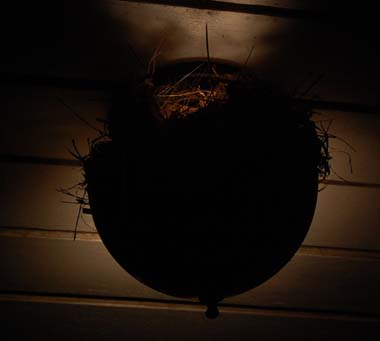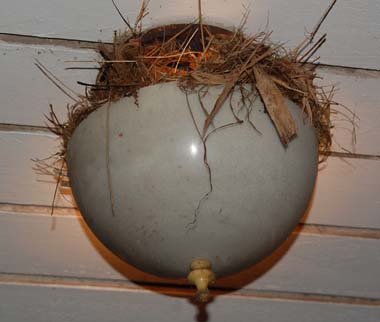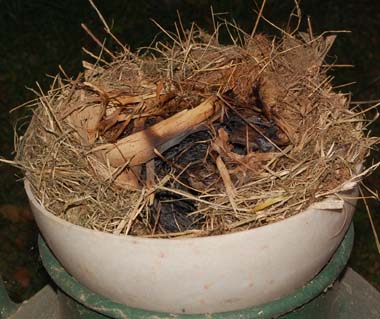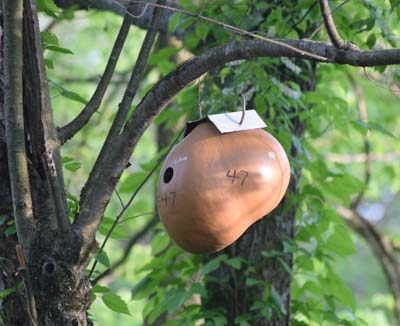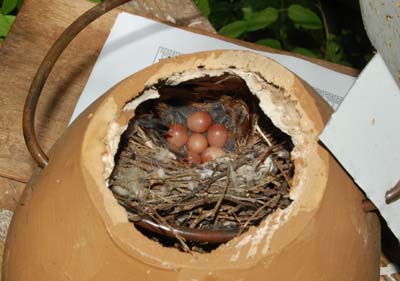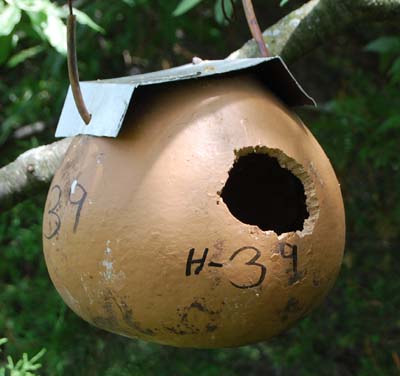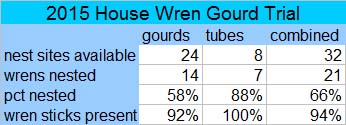Wren gourds 2014
In recent years, house wrens have again posed a serious threat to the nesting success of other cavity nesters on our property, especially in the wilder areas. In 1992, I tested the use of small wren gourds to entice the wrens away from wooden boxes for titmice and other cavity nesters. While this trial showed promise, I hadn’t pursued it further until this year. 29 small gourds were placed in trees and large shrubs along overgrown fence rows and also near a small stream in a wooded area. The gourds were distributed rather randomly, resulting in overlapping nesting territories. This area always appears to be saturated with house wrens. They often use old downy cavities, as do bluebirds. They also use several nest boxes placed along the creek on metal posts. House wrens seem to be able to nest almost anywhere, so the extra gourds aren’t likely to attract even more pairs. However, it could increase their productivity – something I need to consider in the future use of gourds.
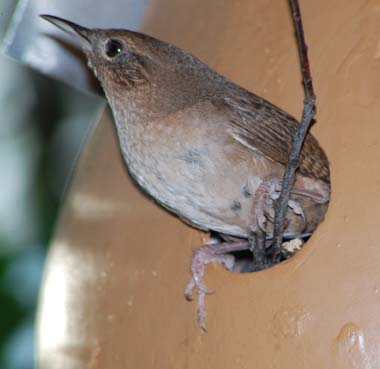
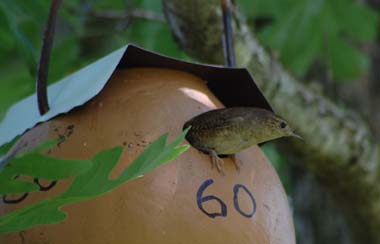
Gourd preparation
The 29 small gourds varied in size from 55cm to 93cm in circumference. There was no difference in the wren’s preference for size as far as which gourds were used first. A 3” hole was made in the top of the gourds for easy cleaning and nest inspection and emptying of sticks. A brown stain was applied to the gourds since they will be used for several years. The roof of metal flashing was affixed to the top by running the hanging wire through the metal on either side. Running the wire through a short length of Tygon tubing prevented the wire from cutting into the gourd at the two drilled holes. At the end of the nesting season, all gourds were retrieved, emptied and hung in the barn with the martin gourds, ready for next year’s use.

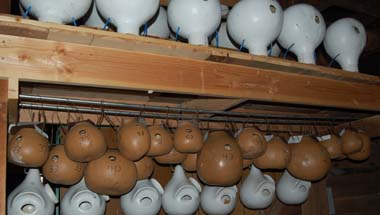
2014 wren gourd use
Of the 29 wren gourds placed, 27 had wren sticks added and 25 had successful nestings.
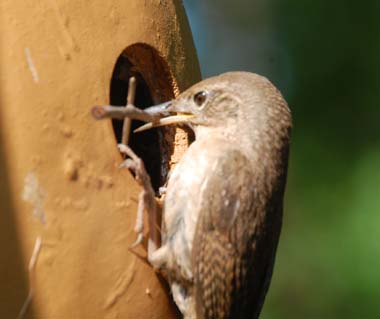
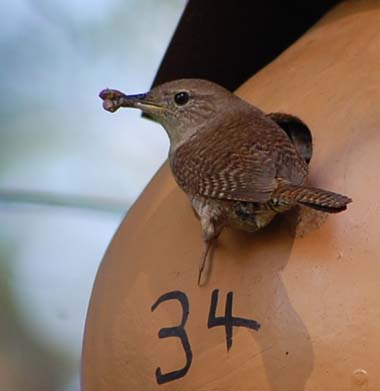
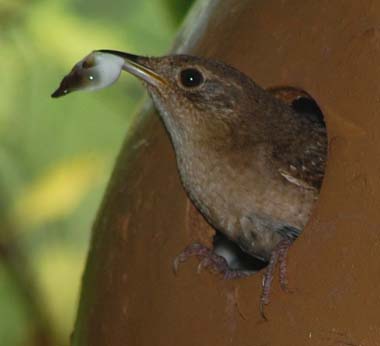
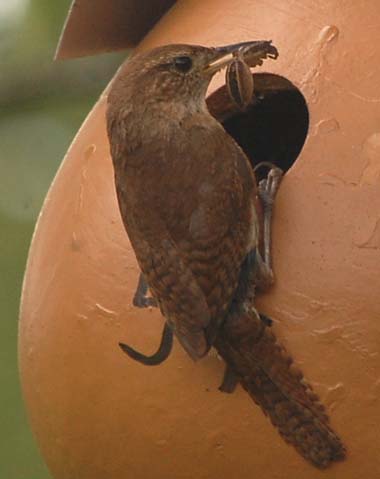
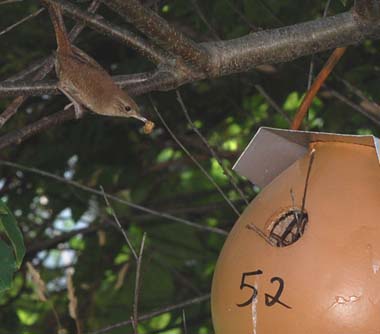
An unexpected success
The purpose of this year’s gourd offering was just to reaffirm that wrens would still prefer them to other sites. However, one happy outcome was that gourds placed along the fencerow adjacent to the north garden plot caused the wrens to ignore the two bluebird boxes at the corners of the garden. But, no bluebirds or tree swallows used the boxes, perhaps because of the wrens’ presence in the three previous years. The third box at a corner nearest the barn was used by bluebirds, as usual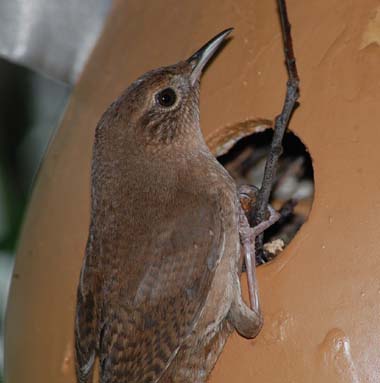
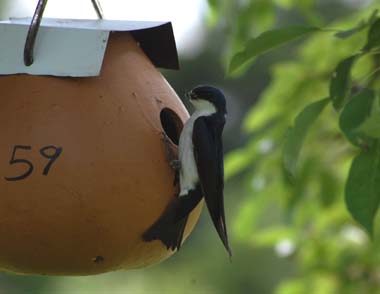
An unexpected disaster
Two nest boxes in the only open area along the creek have been used by tree swallows and bluebirds for the past 5 years. The tree swallows always used the box at the water’s edge and the bluebirds used a box set back 40 feet from the creek. House wrens had never interfered with these nestings. This year, the bluebirds had a first brood further down the creek in a Downy cavity and then began a second nest in their usual box. The tree swallows also appeared rather late and chickadees had already begun nesting in their creekside box. This would have worked out fine except that I couldn’t resist placing one of the gourds on the creek blind earlier, which is near both of these boxes. Wrens nested in the gourd, but, it wasn’t long before eggs were removed from the chickadee box and wren sticks appeared. Then the first two eggs laid by the bluebird were pecked. Both nests failed. The wrens did not use either box but were observed entering both boxes. And, the tiny triangular holes in the bluebird eggs were unmistakably caused by the wren’s beak.
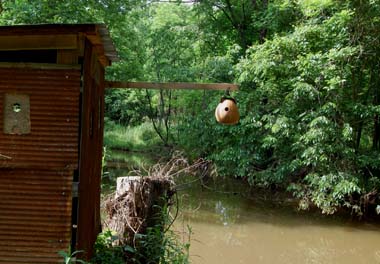
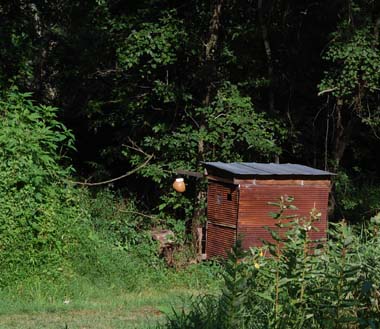
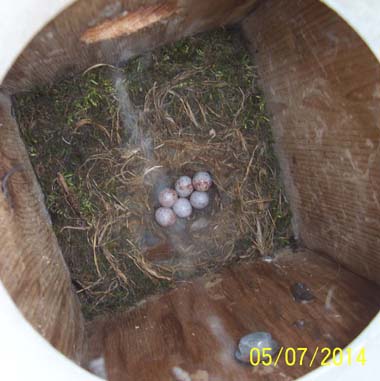
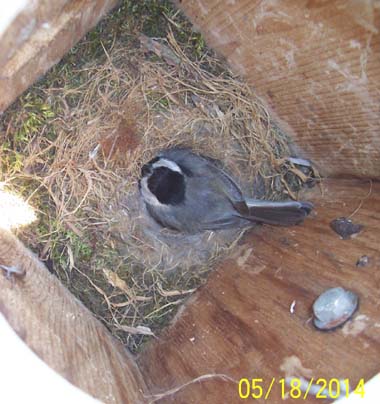
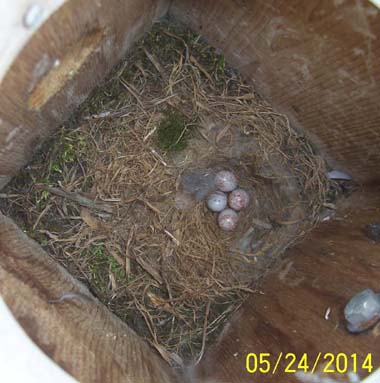
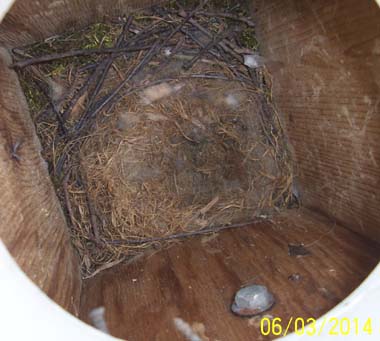
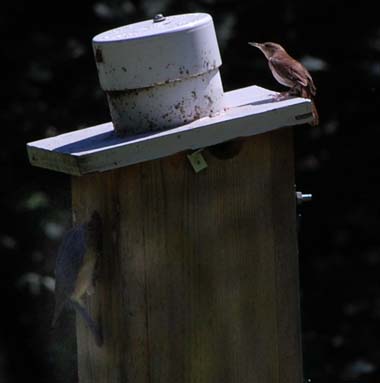
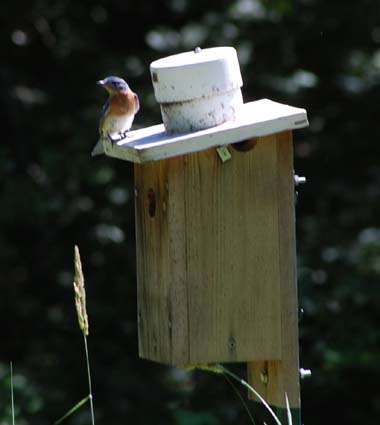
nestbox containing it's first two eggs
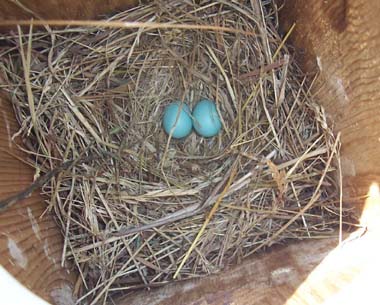
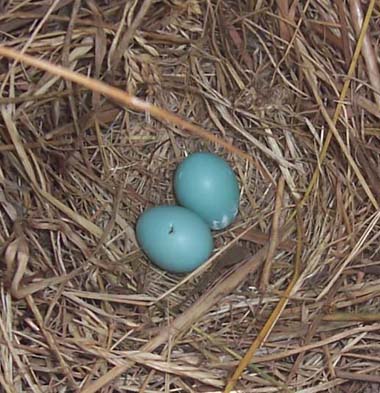
The tentative plan for 2015
Next year I plan to place the wren gourds in groups of three and space these groups far enough apart to encourage non-overlapping nesting territories along the same fencerow and creek area. Why house wrens so frequently destroy the nests of other birds is unclear. While I haven’t witnessed this, others report that wren nest predation is not limited to nests in cavities. Destroying the eggs or young of open nesters would not secure nest sites for the wren’s use. But, perhaps destroying all nearby nests is a simpler evolutionary step. After all, pecking a few eggs takes very little energy and time on the part of the wren.

A surprise wren nest in the front porch light
Ironically, while I was monitoring the 29 wren gourds, 4 of which were within 50’ of the front porch, wrens built a nest in the globe of the front porch light. We were unaware of this, since we use the backdoor. I turned on the porch light switch one night, for some reason, and it appeared that the bulb had burned out. Several minutes later the smell of burning grass wafted through the living room window, coming from a smoldering nest in the light globe. There had been so much nesting material around the bulb that I hadn’t noticed the dim glow on the ceiling above the globe when I turned on the light. The spaced boards on the porch ceiling would have allowed a fire to easily spread if it had not been caught in time. As I returned to find the smoldering nest, a wren flew out of the globe. Of almost 100 bulbs in our house and outbuildings, only 8 that are seldom used are still tungsten and this was one of them. It may be that dry grass tightly packed around a CFL would also eventually ignite. Simply removing the globe may be better.
